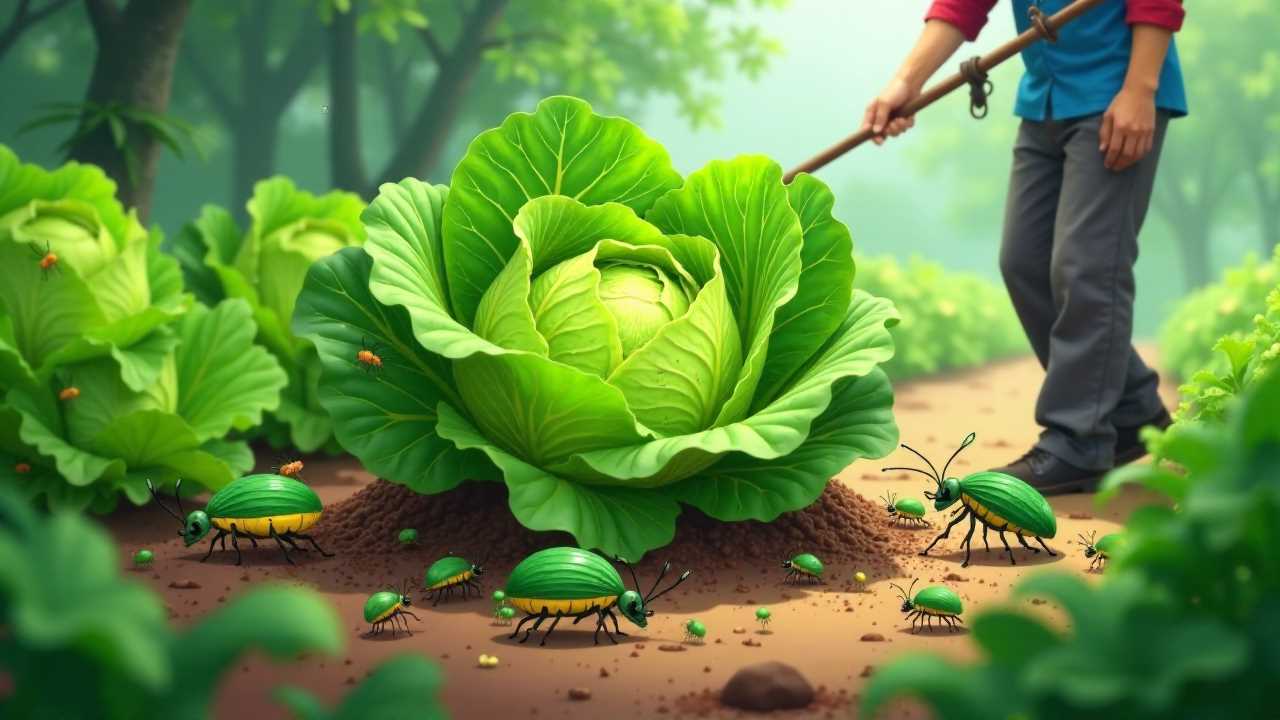
Understanding Natural Pest Control
Natural pest control methods are gaining popularity among gardeners and farmers who seek to protect their plants without relying on synthetic chemicals. These methods not only promote a healthier environment but also ensure the safety of beneficial insects and wildlife. In this article, we will explore various effective natural pest control methods, including biological control, beneficial insects, organic pesticides, companion planting, neem oil, and traps.
Biological Control: Harnessing Nature's Predators
Biological control involves using natural predators or parasites to manage pest populations. This method can be incredibly effective, as it targets specific pests without harming other beneficial organisms. For example, ladybugs are well-known for their ability to consume aphids, a common garden pest. By introducing ladybugs into your garden, you can significantly reduce aphid populations without resorting to chemical pesticides.
Another example of biological control is the use of parasitic wasps. These tiny wasps lay their eggs inside pest insects, and when the eggs hatch, the larvae consume the host from the inside out. This method is particularly useful for controlling caterpillar populations that can devastate crops.
Beneficial Insects: Allies in the Garden
Beneficial insects play a vital role in maintaining a balanced ecosystem. They not only help control pest populations but also contribute to pollination and soil health. Some of the most effective beneficial insects include:
- Ladybugs: As mentioned earlier, ladybugs are voracious consumers of aphids and other soft-bodied pests.
- Lacewings: The larvae of lacewings are known as "aphid lions" due to their appetite for aphids and other small pests.
- Predatory mites: These tiny creatures feed on spider mites, thrips, and other pests that can harm plants.
Encouraging beneficial insects in your garden can be as simple as planting a diverse array of flowers and herbs that provide nectar and pollen. By creating a welcoming environment for these allies, you can naturally reduce pest populations.
Organic Pesticides: Safe and Effective Solutions
When pests become overwhelming, organic pesticides can provide a safe alternative to synthetic chemicals. These products are derived from natural sources and are generally less harmful to the environment and non-target organisms. Some popular organic pesticides include:
- Neem oil: Extracted from the seeds of the neem tree, neem oil disrupts the life cycle of pests by affecting their hormones and preventing them from maturing. It is effective against a wide range of pests, including aphids, whiteflies, and spider mites.
- Insecticidal soap: Made from natural plant oils and fats, insecticidal soap works by suffocating soft-bodied insects. It is particularly effective against aphids, mealybugs, and spider mites.
- Diatomaceous earth: This natural powder is made from the fossilized remains of tiny aquatic organisms called diatoms. When insects come into contact with diatomaceous earth, it damages their exoskeletons, leading to dehydration and death.
Using organic pesticides allows you to manage pest populations while minimizing harm to beneficial insects and the environment.
Companion Planting: Nature's Pest Deterrent
Companion planting is a technique that involves planting different crops in proximity to one another for mutual benefit. Certain plants can repel pests, attract beneficial insects, or enhance the growth of neighboring plants. For example:
- Marigolds: These vibrant flowers are known to repel nematodes and other pests, making them an excellent companion for vegetables.
- Basil: Planting basil near tomatoes can help deter aphids and whiteflies while enhancing the flavor of the tomatoes.
- Nasturtiums: These flowers can act as a trap crop, attracting aphids away from more valuable plants.
By strategically planning your garden layout, you can create a natural pest control system that benefits all your plants.
Using Traps: A Hands-On Approach
Traps can be an effective way to monitor and control pest populations. There are various types of traps, each designed to target specific pests. Some common traps include:
- Sticky traps: These bright yellow or blue cards attract flying insects like whiteflies and thrips. Once they land on the sticky surface, they cannot escape.
- Pheromone traps: These traps use synthetic versions of insect pheromones to lure pests, such as moths, into a sticky or baited area. By monitoring the number of trapped insects, you can gauge pest populations and take action as needed.
- Bait traps: These traps use food or other attractants to lure pests into a confined space where they cannot escape. For example, fruit fly traps often use a mixture of vinegar and sugar to attract and capture fruit flies.
Setting up traps around your garden can help you keep an eye on pest populations and take action before they become a significant problem.
Integrating Natural Pest Control Methods
To achieve the best results, we recommend integrating multiple natural pest control methods. By combining biological control, beneficial insects, organic pesticides, companion planting, neem oil, and traps, you can create a comprehensive pest management strategy that minimizes the need for synthetic chemicals.
For instance, you might start by introducing beneficial insects to your garden, while also planting companion plants that deter pests. If pest populations begin to rise, you can apply neem oil or insecticidal soap as a targeted treatment. Finally, setting up traps will help you monitor the effectiveness of your efforts and adjust your strategy as needed.
Conclusion
Natural pest control methods offer effective solutions for managing pests while promoting a healthy ecosystem. By understanding and implementing techniques such as biological control, beneficial insects, organic pesticides, companion planting, neem oil, and traps, we can protect our gardens and crops without relying on harmful chemicals. Embracing these methods not only benefits our plants but also contributes to a more sustainable and environmentally friendly approach to gardening.
 Family Craft ProjectsHome ImprovementCooking and BakingReuse and RecycleDIY GiftsEco-Friendly ProjectsDIY Home SolutionsSeasonal ActivitiesFun and GamesLearn TogetherPrivacy PolicyTerms And Conditions
Family Craft ProjectsHome ImprovementCooking and BakingReuse and RecycleDIY GiftsEco-Friendly ProjectsDIY Home SolutionsSeasonal ActivitiesFun and GamesLearn TogetherPrivacy PolicyTerms And Conditions
